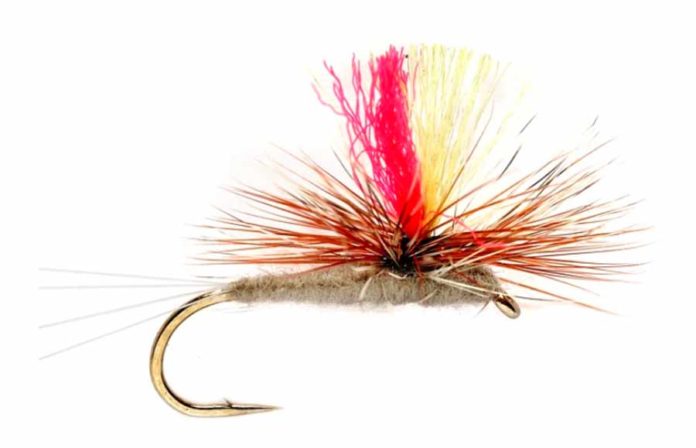There are few more maddening situations in fly fishing than watching fish gorge themselves right in front you but being unable to catch them because you can’t see your fly. (And for you whippersnappers* who can now spy a Trico spinner at 60 feet: rest assured that such acuity won’t last forever.) The frustration of fishing blind can take all the fun out of standing before a pod of feeding fish.
The easiest solution is to use an indicator fly, one that contrasts with the water you’re fishing. If there are a lot of white bubbles and glare, perhaps something with a black wing will stand out. At dusk, a White Cahill is pretty easy to see. I also tie specific indicator patterns, parachute-style or Comparadun-style, with wings of fluorescent orange, pink, and chartreuse—like this one. Not only do these flies stand out against the water or any bubbles and debris, but they also attract an occasional fish looking for a change of pace from the naturals floating by.
Tie your indicator pattern to the end of the tippet, and fish the more imitative fly on an 18- to 24-inch dropper. Once your cast has landed, you can use the indicator fly to locate the approximate position of your smaller imitation. When you see a rise near your indicator fly, set the hook. Sometimes, you’ll come up with nothing, but you’ll be quick on the draw if a fish does eats your tiny dropper fly. If the fish are striking hard, your indicator fly might even go under, making it even easier to detect a strike.
So the next time all the fish want is a size 22 BWO or a Trico spinner, drop that invisible fly off something you can see. It can make all the difference.
* PS: Get off my lawn!
Credit: Source link






























